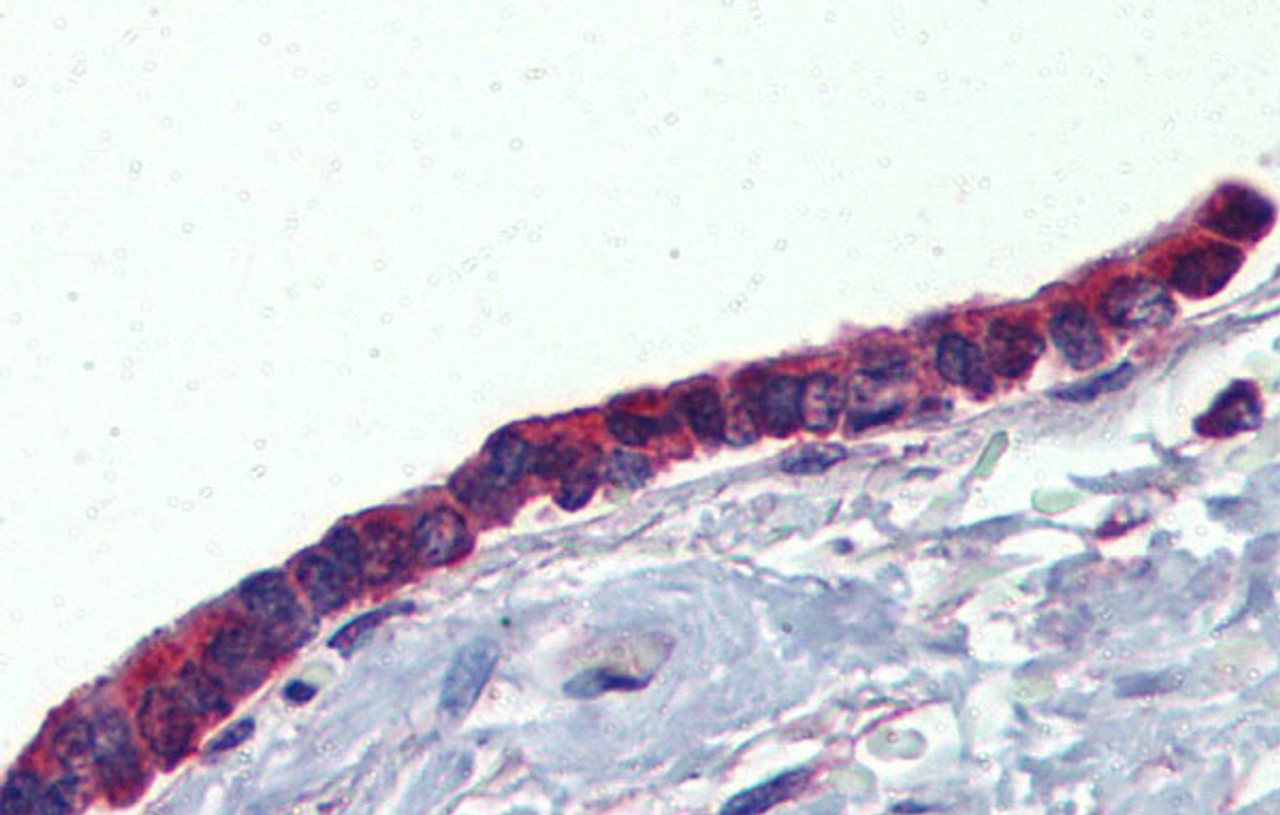Product Description
PLUNC Antibody | 29-758 | ProSci
Host: Rabbit
Reactivity: Human, Mouse, Rat, Dog
Homology: N/A
Immunogen: Antibody produced in rabbits immunized with a synthetic peptide corresponding a region of human PLUNC.
Research Area: Cancer
Tested Application: E, WB
Application: PLUNC antibody can be used for detection of PLUNC by ELISA at 1:1562500. PLUNC antibody can be used for detection of PLUNC by western blot at 0.25 μg/mL, and HRP conjugated secondary antibody should be diluted 1:50, 000 - 100, 000.
Specificiy: N/A
Positive Control 1: Cat. No. 1205 - Jurkat Cell Lysate
Positive Control 2: N/A
Positive Control 3: N/A
Positive Control 4: N/A
Positive Control 5: N/A
Positive Control 6: N/A
Molecular Weight: 28 kDa, 27 kDa
Validation: N/A
Isoform: N/A
Purification: Antibody is purified by peptide affinity chromatography method.
Clonality: Polyclonal
Clone: N/A
Isotype: N/A
Conjugate: Unconjugated
Physical State: Liquid
Buffer: Purified antibody supplied in 1x PBS buffer with 0.09% (w/v) sodium azide and 2% sucrose.
Concentration: batch dependent
Storage Condition: For short periods of storage (days) store at 4˚C. For longer periods of storage, store PLUNC antibody at -20˚C. As with any antibody avoid repeat freeze-thaw cycles.
Alternate Name: PLUNC, LUNX, NASG, SPLUNC1, SPURT, bA49G10.5, PLUNC
User Note: Optimal dilutions for each application to be determined by the researcher.
BACKGROUND: PLUNC is the human homolog of murine plunc and is specifically expressed in the upper airways and nasopharyngeal regions. The exact biological function of this protein is not known, however, it has been suggested to be involved in inflammatory responses to irritants in the upper airways. It may also serve as a potential molecular marker for detection of micrometastasis in non-small-cell lung cancer.This gene is the human homolog of murine plunc, and like the mouse gene, is specifically expressed in the upper airways and nasopharyngeal regions. The exact biological function of this gene is not known, however, it has been suggested to be involved in inflammatory responses to irritants in the upper airways. It may also serve as a potential molecular marker for detection of micrometastasis in non-small-cell lung cancer. Multiple transcript variants resulting from alternative splicing in the 3' UTR have been detected, but the full-length nature of only two is known.
 Euro
Euro
 USD
USD
 British Pound
British Pound
 NULL
NULL












